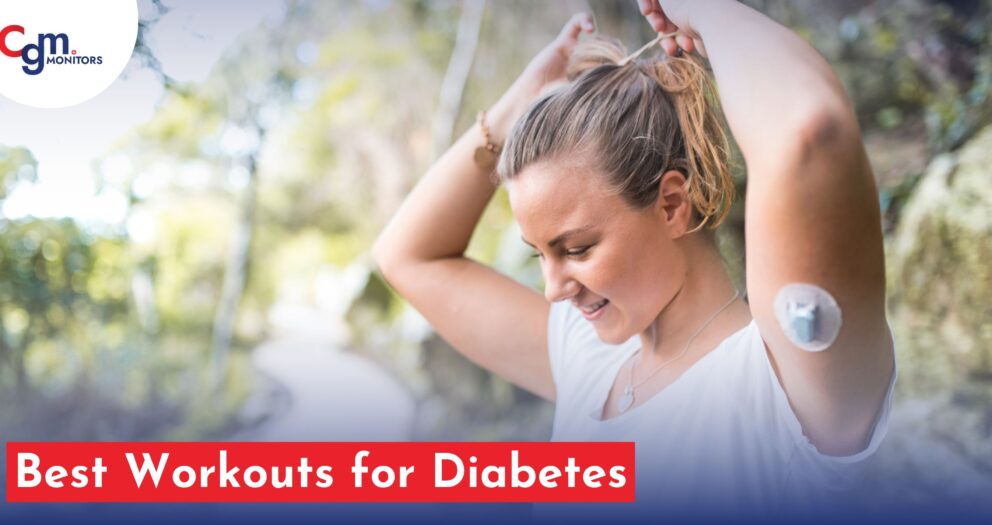Table of content
- Management of Newly Diagnosed Diabetes: A Complete Guide
- Understanding Diabetes
- Step 1: Education and Alertness
- How and at what time to monitor your newly diagnosed diabetes?
- Step 2: Applying a Healthy Diet
- Step 3: Regular Physical Activity
- Step 4: Medication and Insulin Therapy (if required)
- Step 5: Monitoring and Self-care
- Step 6: Emotional Support and Lifestyle Adjustments
- Step 7: Regular Healthcare Follow-up
- Conclusion
Management of Newly Diagnosed Diabetes: A Complete Guide
Being diagnosed with diabetes can be appealing and thought-provoking, but with precise info and lifestyle modifications, you can proficiently achieve your state and live a hale and hearty life. Whether you have been diagnosed with type 1 or type 2 diabetes, here are stages you can take to steer this new chapter:
Understanding Diabetes
Diabetes is a lifelong condition that interrupts your body processes glucose (sugar), which causes high blood sugar levels. There are two important kinds:
Type 1 Diabetes:
Type 1 diabetes is frequently detected in children and young adults, where the body does not make insulin.
Type 2 Diabetes:
Normally, produced in adults and is considered insulin resistance, where the body does not utilize insulin proficiently.
Step 1: Education and Alertness
Considering your disorder is vital. Work carefully with your healthcare provider to know about newly diagnosed diabetes.
How and at what time to monitor your newly diagnosed diabetes?
Medications:
If suggested, know their purpose, quantity, and possible side effects.
Dietary Guidelines:
Study about carbohydrate counting, portion control, and balanced eating.
Physical Activity:
The significance of steady exercise in handling newly diagnosed diabetes.
Signs of High/Low Blood Sugar:
Knowing and handling hypoglycemia (low blood sugar) and hyperglycemia (high blood sugar) in newly diagnosed diabetes.
Step 2: Applying a Healthy Diet
A stable diet act as a vital role in handling newly diagnosed diabetes:
Carbohydrates:
Select complex carbohydrates (whole grains, vegetables, fruits,) over simple sugars to handle newly diagnosed diabetes.
Proteins:
Include lean proteins (chicken, fish, legumes) to help even out blood sugar.
Fats:
select healthy fats (avocado, olive oil, nuts) in control is effective in newly diagnosed diabetes.
Fiber:
The goal of fiber-rich foods is to aid absorption and control blood sugar levels.
Portion Control:
Monitor your portion sizes to avoid spikes in blood sugar.
Step 3: Regular Physical Activity
Workout is significant to handling newly diagnosed diabetes:
Cardiovascular Exercises:
You should do cycling, walking, and swimming for at least 30 minutes maximum days of the week to handle newly diagnosed diabetes.
Strength Training:
Include resistance exercises to build muscle and recover insulin sensitivity.
Flexibility and Balance:
Yoga or stretching exercises can recover complete fitness and welfare.
Step 4: Medication and Insulin Therapy (if required)
Depending on your form of diabetes, your doctor may recommend:
Oral Medications:
Assist your body uses insulin more efficiently (type 2 diabetes) in handling newly diagnosed diabetes.
Insulin Therapy:
Important for type 1 diabetes and occasionally essential for type 2 diabetes if other actions aren’t enough.
Step 5: Monitoring and Self-care
Steady monitoring is important for the management of newly diagnosed diabetes
Blood Sugar Testing:
Test your blood sugar as suggested by your healthcare provider.
Health Checks:
Frequently visit your doctor for A1C tests, cholesterol checks, and blood pressure monitoring.
Foot and Eye Care:
Diabetes can disturb these areas—keep them healthy with steady checks.
Step 6: Emotional Support and Lifestyle Adjustments
Handling diabetes includes more than physical health:
Support Network:
Try to find support from family, friends, or diabetes support groups.
Anxiety Management:
Practice relaxation techniques to lessen stress levels.
Smoke and Alcohol:
Abandon smoking and restrained alcohol drinking.
Step 7: Regular Healthcare Follow-up
Stay active in managing your diabetes:
Scheduled Visits:
Keep appointments with your healthcare team.
Education Updates:
Stay informed about newly diagnosed diabetes and plans.
Changes:
Bring up-to-date your plan as desired based on your blood sugar readings and complete health.
Treatment with Continuous Glucose Monitoring (CGM) systems
Continuous Glucose Monitoring (CGM) systems offer a real-time understanding of glucose levels, offering assistance such as:
Actual Data: Continuous monitoring of glucose levels throughout the day and night.
Early Detection: Warnings for hypoglycemia and hyperglycemia drift before they become severe.
Improved Management: Assist in adjusting insulin doses and lifestyle based on glucose trends.
Convenience: Decreases the need for frequent fingerstick testing.
Effective use includes selecting the right CGM system, proper insertion and wear, taking data, and working together with healthcare providers. CGM technology improves newly diagnosed diabetes, supporting better control and quality of life. For high-quality products of CGM, visit our website https://cgmmonitors.com/
Conclusion
Dealing with newly diagnosed diabetes needs devotion and lifestyle changes, but with the correct care and info, you can live a full and lively life. Remember, each person’s journey with diabetes is exclusive, so work carefully with your healthcare provider to generate a modified plan that everything best for you.
By prioritizing education, healthy eating, steady exercise, and active healthcare, you can successfully achieve your diabetes and lessen its effect on your life.







Write a comment
Your email address will not be published. All fields are required